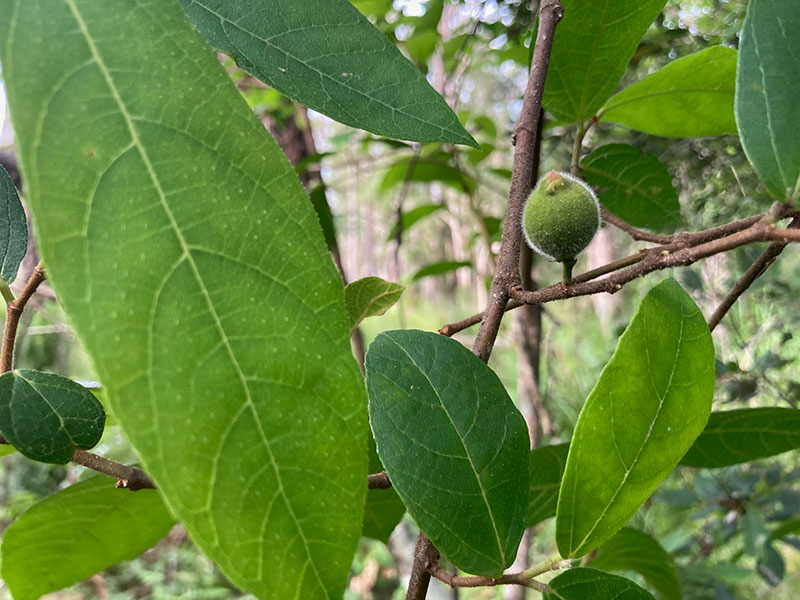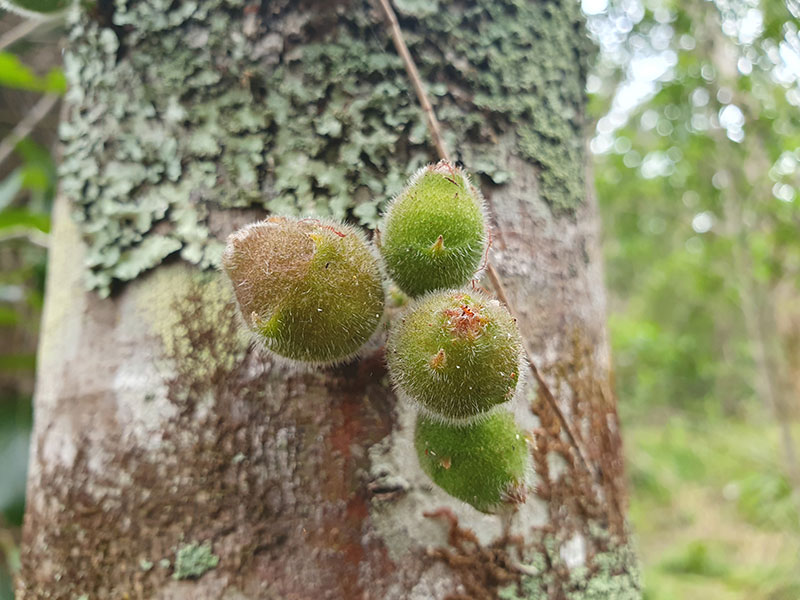Sandpaper Fig
Sandpaper Fig (Ficus coronata)
Family: Moraceae
Size: up to 15m
Description: Shrubs to small trees with soft figs and leaves with the texture of sandpaper (50 native ficus species in Australia).
Habitat: Found growing along creeks and gullies in rainforests and open country.
Foliage: Dark green alternate leaves with serrate margin, sandpaper texture above and hairy below, a white milky latex sap oozes from any part of the plant once it is damaged. Bark smooth and dark grey.
Flowers: Fig flowers are located inside their fruit and are pollinated by specific species of wasps
Fruit/seeds: Edible purple to black (when ripe) soft skinned rounded hairy fruit (20mm) full of tiny seeds. Fruits are commonly found on older branches and twigs and on the trunks themselves. Fruits generally ripen from January through to June but ripe fruits can be found throughout the year.
Distribution: Figs are mostly found in the tropics. NSW, QLD, NT, WA
Uses: Edible fruit eaten whole when ripe (best collected from the ground), some taste better than others. Leaves used as sandpaper to polish weapons and tools. White latex sap used topically to treat skin infections and small wounds. Milky sap is poisonous and should not be consumed, however the figs themselves are safe to eat.



